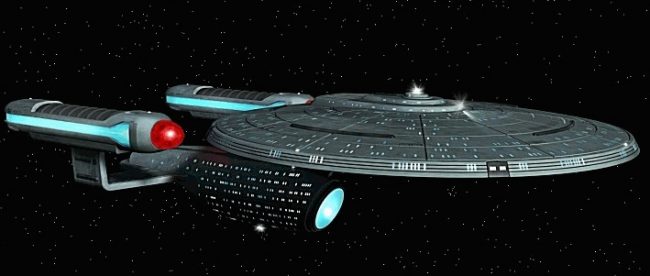More on Spaceship Design (and a Book Recommendation)

Hi!
Last Friday, I used this “Weekender” space to ask a question about spaceship design. I got a lot of great, thoughtful emails in response, so I’m going to share the commonalities here. The question, for those who didn’t see it the first time (and don’t want to click that link):
If you were building a spaceship in space, wouldn’t a cube or sphere make a lot more sense? For the cube, we have the same benefits of any on-ground building — it’s just an efficient use of space. For the cube, if you can find a material with extremely high density to put at the core, you’d even get some gravitational effects, right? That seems like a good thing. Plus, there is no “up” or “down” in space, so you don’t need a design that forces that perspective on the passengers. Am I missing something here?
The replies pointed out three big things:
First, I was basically right — a sphere makes a lot of sense (except for the two caveats below). Aerodynamics don’t matter in the vacuum of space and structurally, they’re less likely to have weak points than a cube. You can use centrifugal effects or a highly-dense core to create gravity, maybe, as well.
But two things need to be addressed. First, while I pointed out that ships like the Enterprise (from Star Trek) are built in space, I incorrectly concluded that they therefore shouldn’t have to account for atmospheric effects. There are plenty of examples of Star Trek ships landing on a planet and taking off again, so, yes, having an aerodynamic design is important for those (rare) situations. The second, though, is probably more important. Space isn’t empty — there are asteroids and other space rocks floating (that’s not the right word, but you get the idea) out there. And if you’re traveling around at low speeds, that’s not a big deal. But at warp? You’re covering a lot of ground (also, not the right word) at a very high speed, and smacking into anything, even small, could cause massive damage.
If you’re interested in thinking about this more, I have great news for you: About two dozen readers recommended the same book! “Project Hail Mary” by Andy Weir incorporates these issues in the story. I haven’t read it myself — I read his other two books (“The Martian” is great and one of my favorite books; “Artemis” was fine but nothing special) and will pick this one up when I can.
The Now I Know Week In Review
Monday: The United States/North Korea Alliance of 2007: I think the bonus fact is more fun than the real story, so make sure you read that if you skipped it the first time. (Also, I left a placeholder in the bonus fact on this one; I fixed the error on the archives. It didn’t really impact the story, though.)
Tuesday: Where Did the Fear of Poisoned Halloween Candy Come From?: A few readers shared an addendum to this story. In 1858, a mixup in Bradford, England caused some unsafe treats, as the BBC explains, here.
Wednesday: The Problem With 500 Pounds of Pennies
Thursday: New Jersey’s Fake Sister: My history in the lead-in about sister cities had a mistake — I implied (if not stated) that Germany and Russia were at war in 1940, but they clearly weren’t. I revised the lead-in to account for this, but it’s still not quite right; if I find time, I’ll take another shot at it.
And some other things you should check out:
Some long reads for the weekend:
1) “Why note-taking apps don’t make us smarter” (The Verge, 9 minutes, August 2023). I found this interesting for a different reason than you’d think: the benefits of daily journaling. I don’t journal, although I probably should — I like getting my thoughts on paper (not the right word anymore, but you get the idea). When I have, I’ve found it to be both a catharsis and also a way to refine my thinking. But as journals aren’t meant to be shared, I have always felt them to be a waste of time relative to other endeavors (e.g., writing this newsletter). After reading this though, I’m not so sure — in the foreseeable future, will AI be able to take our journals and help us better understand ourselves?
2) “Man in a Can” (Outside Magazine, 38 minutes, December 2022). The subhead: “With Lake Mead drying up due to drought and climate change, the famous desert reservoir is revealing grisly secrets from the past, including the remains of people thought to be victims of Las Vegas foul play. Mark Sundeen [the author] hits Nevada for a freewheeling exploration of dark deeds, a rapidly unfolding apocalypse, and a parched future that will dramatically affect the entire American Southwest.”
3) “Improving the MLB Playoffs: A Ladder” (Something I wrote! It’s seven minutes long). The baseball season is over, and I have a lot of thoughts about how to improve the playoffs.
Have a great weekend!
Dan
